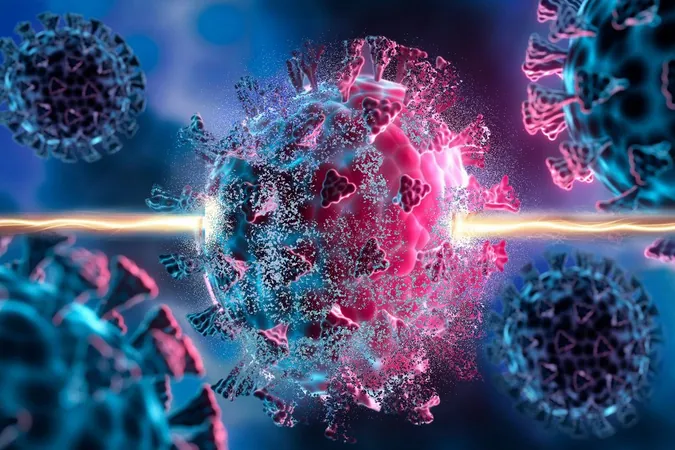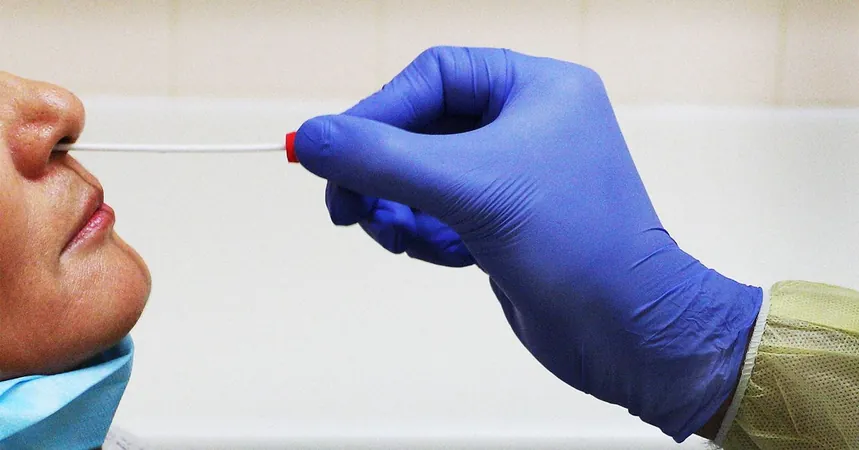
Revolutionary Antiviral Breakthrough: Scientists Unveil Game-Changing Compounds to Combat All Viruses!
2025-07-17
Author: Wei
A Potential Lifesaver in the Fight Against Viruses
Groundbreaking research from MIT and the University of California, Santa Barbara has unveiled a promising new strategy in the battle against viral infections. Scientists have discovered a set of remarkable compounds that can activate a crucial defense mechanism within cells infected by viruses, leading to a potential universal antiviral treatment.
The Science Behind the Discovery
These innovative compounds amplify the integrated stress response (ISR) pathway—an essential cellular defense activated during viral invasion when double-stranded RNA is produced. This pathway effectively halts protein synthesis and blocks viral replication within the cells, curbing the virus's ability to spread.
Unlocking a New Era of Antiviral Therapy
The research team is on a mission to develop robust antivirals capable of battling various viruses simultaneously. By testing 370,830 different molecules, the researchers identified their top contenders, demonstrating efficacy against RSV, herpes simplex virus, and Zika virus, with successful trials on mice showcasing significant reductions in viral loads.
A Game-Changing Class of Antivirals
In a striking departure from traditional antiviral strategies, which typically target specific viruses, the scientists propose that these compounds can modulate the host cell's stress responses. Felix Wong, CEO of Integrated Biosciences and lead author of the study, emphasized the revolutionary potential of these broad-spectrum antivirals that operate on a fundamental level, impacting how all viruses replicate.
An Ingenious Methodology
To unveil these promising compounds, researchers utilized a cutting-edge optogenetic screening technique to introduce light-sensitive proteins into cell genomes. This innovative approach allowed them to activate the ISR pathway using blue light, streamlining the identification of potential antiviral candidates.
Real-World Applications and Future Opportunities
The implications of this discovery are staggering. By targeting host mechanisms instead of viral entities, these compounds could provide resilient antiviral solutions, less susceptible to mutation and resistance. Furthermore, these host-directed therapies could become essential tools for immediate use during viral outbreaks, offering promising alternatives when traditional antiviral strategies may falter.
A Promising Path Forward
Initial tests have shown that these compounds significantly lower viral levels in cells infected with Zika, RSV, and herpes. In trials with mice, a standout compound led to a noticeable decrease in herpes virus presence and an overall improvement in symptoms. As researchers continue their work, the next steps include testing against a broader array of viruses and discovering additional compounds that can further enhance the ISR pathway.
Support Behind the Research
This groundbreaking research has received funding from notable organizations including the Defense Threat Reduction Agency, the National Science Foundation, and the U.S. Army Research Office, illustrating the high-level recognition of its potential impact. The future of antiviral treatment may soon look very different—thanks to the innovative minds at MIT and UC Santa Barbara!


 Brasil (PT)
Brasil (PT)
 Canada (EN)
Canada (EN)
 Chile (ES)
Chile (ES)
 Česko (CS)
Česko (CS)
 대한민국 (KO)
대한민국 (KO)
 España (ES)
España (ES)
 France (FR)
France (FR)
 Hong Kong (EN)
Hong Kong (EN)
 Italia (IT)
Italia (IT)
 日本 (JA)
日本 (JA)
 Magyarország (HU)
Magyarország (HU)
 Norge (NO)
Norge (NO)
 Polska (PL)
Polska (PL)
 Schweiz (DE)
Schweiz (DE)
 Singapore (EN)
Singapore (EN)
 Sverige (SV)
Sverige (SV)
 Suomi (FI)
Suomi (FI)
 Türkiye (TR)
Türkiye (TR)
 الإمارات العربية المتحدة (AR)
الإمارات العربية المتحدة (AR)